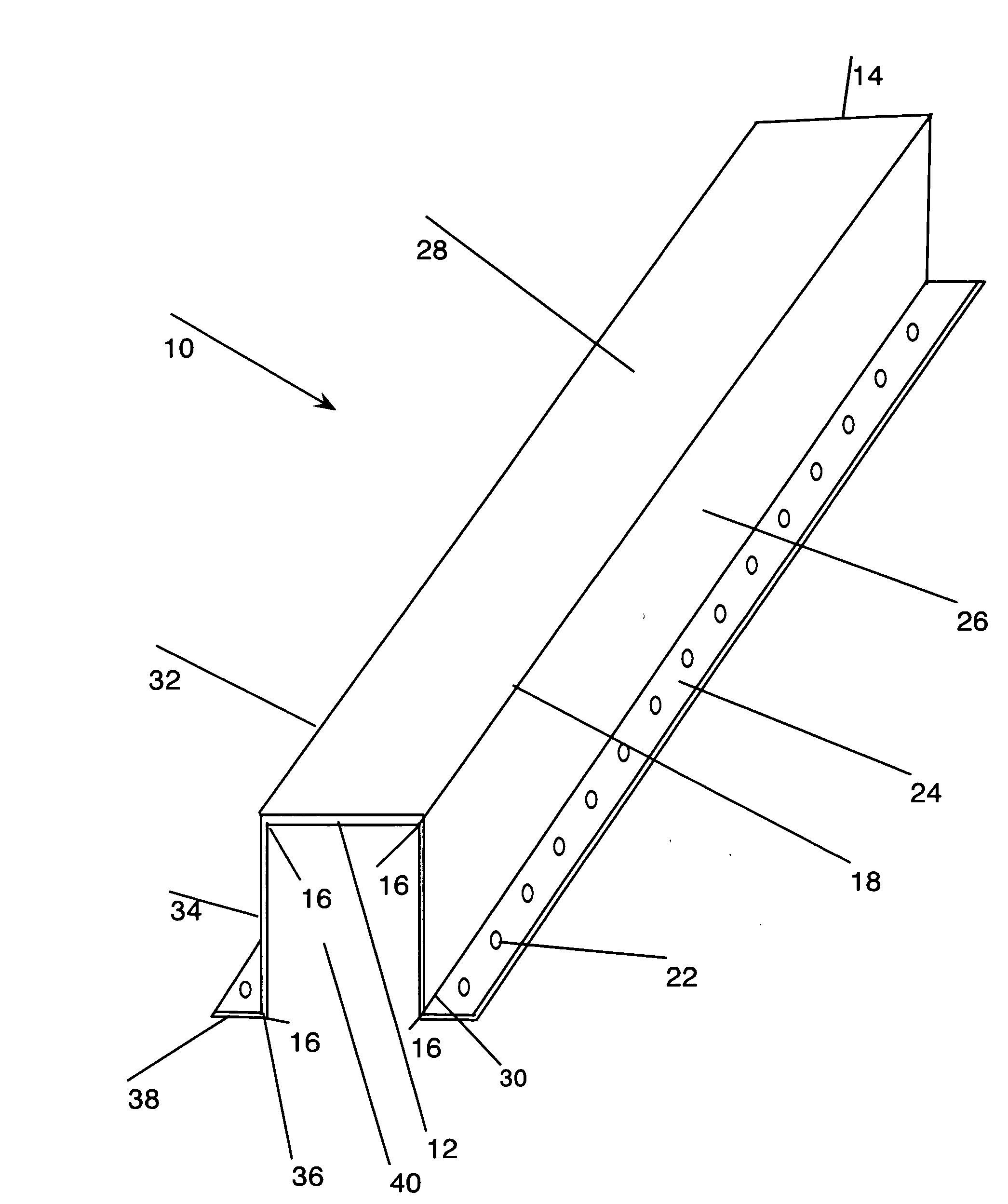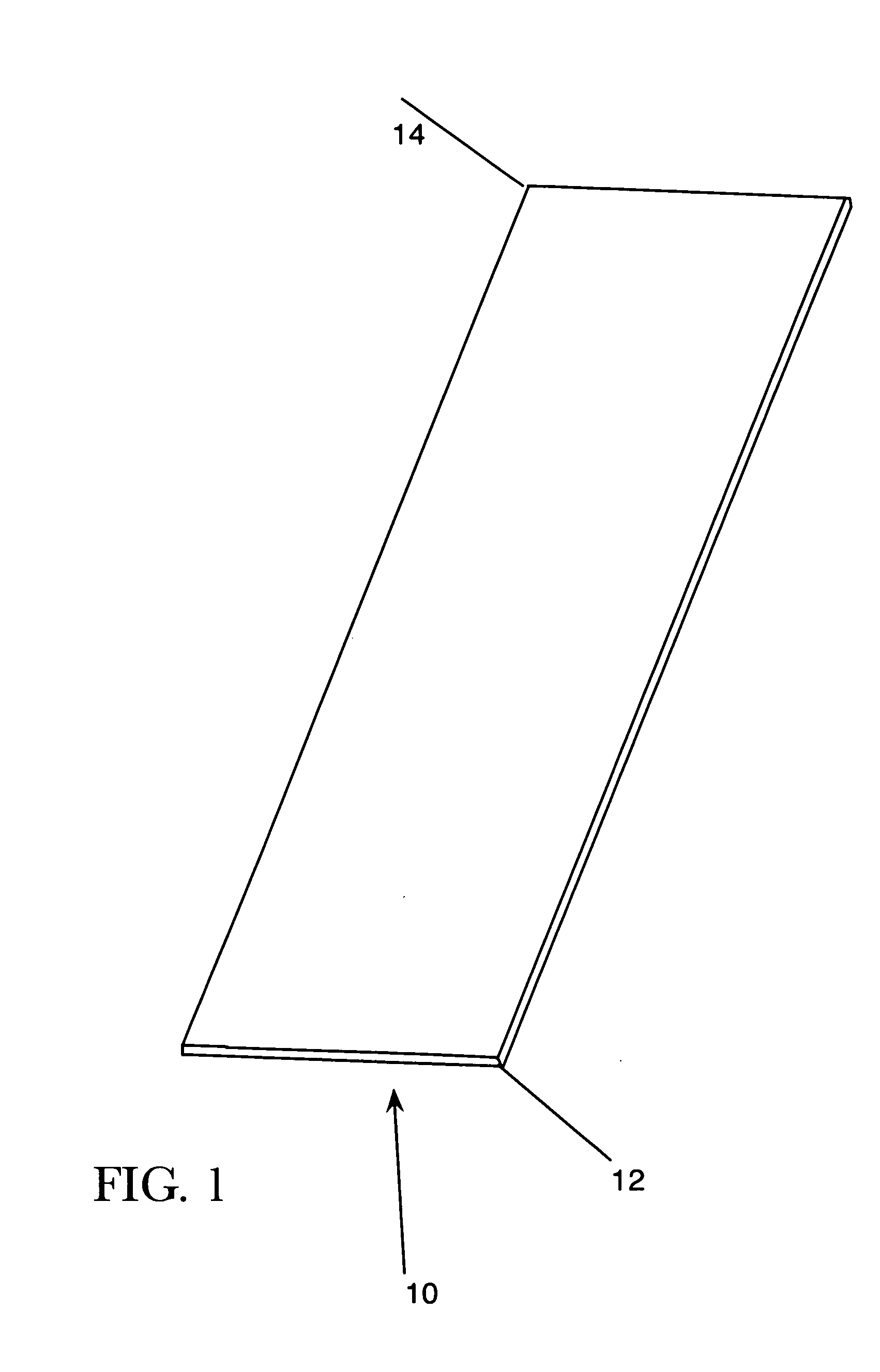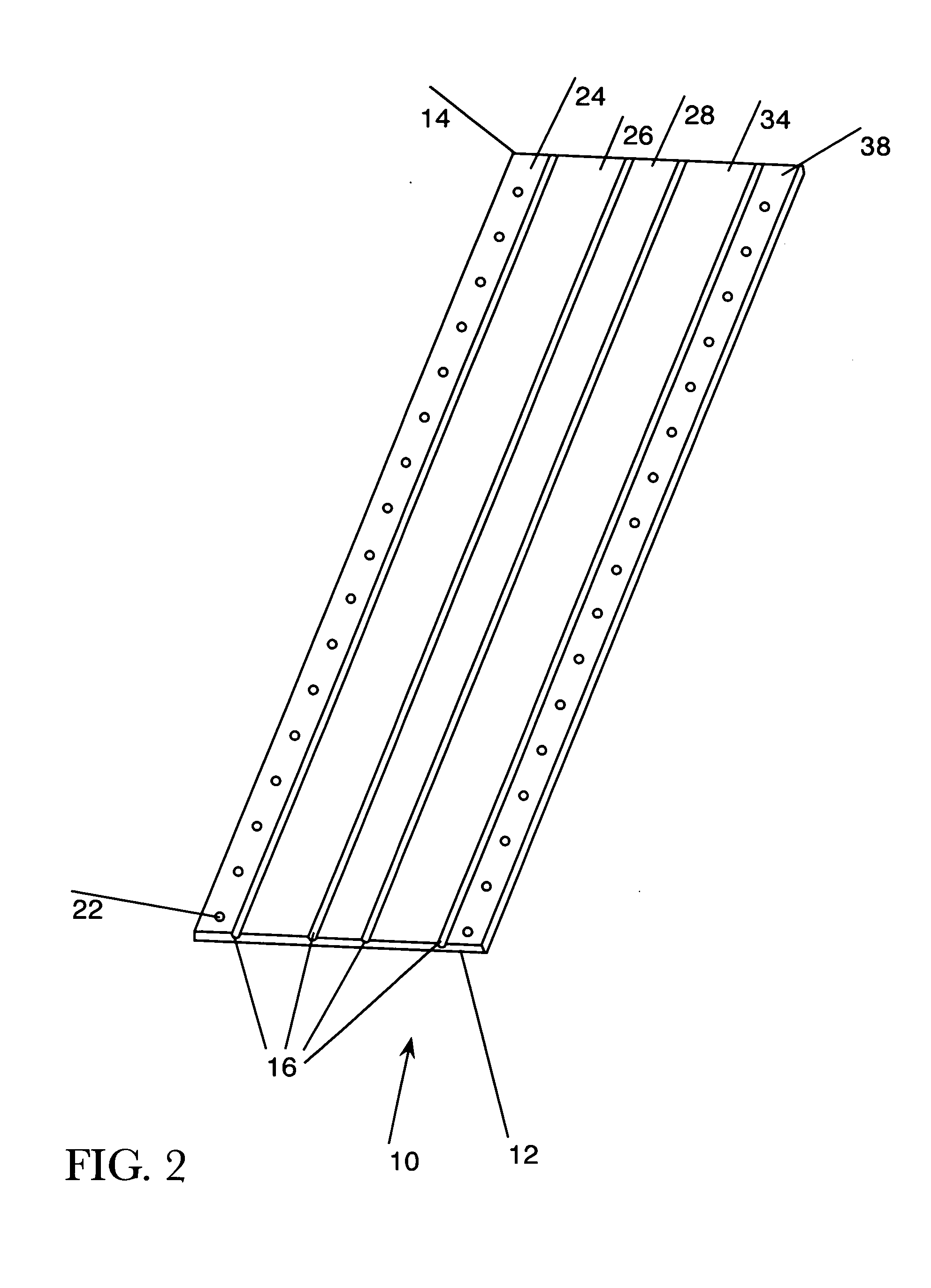Method and apparatus for concealed installation of wires, cables, fibers, pipes and the like within a structure
a technology for installing pipes and wires, which is applied in the direction of electrical equipment, etc., can solve the problems of no convenient equipment or methods for later adding or changing low voltage wiring, and no convenient methods and equipment for initially housing low voltage wires and cables, etc., to facilitate bending and shape forming, easy to cut or saw multiple pieces, and easy to paint
- Summary
- Abstract
- Description
- Claims
- Application Information
AI Technical Summary
Benefits of technology
Problems solved by technology
Method used
Image
Examples
third embodiment
[0047]In FIG. 9, finished conduit 10 is shown. The previously flat conduit 10 containing a plurality of tightly spaced scored indentations 16 (not shown in FIG. 9) are evenly and uniformly bent so that the scored indentations 16 collapse in on each other creating a round bend 20, forming a conduit with a rounded cavity 46. The attachment section 48 and the attachment section 50 are created by angularly bending the conduit 10 along the scored indentations 16 (not shown in FIG. 9) outwardly from the longitudinal axis of conduit 10 to form and angular bend 44 and an angular bend 42.
first embodiment
[0048]In FIG. 10, the conduit 10 prior to installation and shaping is shown. The conduit 10 is scored along scored indentations 16 and is placed upon a mounting surface 53 for attachment. A plurality of fasteners 51 are placed through the openings 22 disposed within the attachment section 24 of the conduit 10. The fasteners 51 are driven into the mounting surface 53, thereby securing the conduit 10 to the mounting surface 53. While the fasteners 51 shown being used for securing the conduit 10 are nails, any suitable fastening device, such as staples or screws may be used.
[0049]In FIG. 11, the conduit 10 is shown secured to the mounting surface 53 by means of the fasteners 51. The conduit 10 has been bent at an angle at the bend 30 along scored indentation 16, forming the attachment section 24 and beginning the formation of the side section 26.
[0050]In FIG. 12, the conduit 10 is shown secured to the mounting surface 53 through the attachment section 24 by means of the fasteners 51. T...
PUM
 Login to View More
Login to View More Abstract
Description
Claims
Application Information
 Login to View More
Login to View More - R&D
- Intellectual Property
- Life Sciences
- Materials
- Tech Scout
- Unparalleled Data Quality
- Higher Quality Content
- 60% Fewer Hallucinations
Browse by: Latest US Patents, China's latest patents, Technical Efficacy Thesaurus, Application Domain, Technology Topic, Popular Technical Reports.
© 2025 PatSnap. All rights reserved.Legal|Privacy policy|Modern Slavery Act Transparency Statement|Sitemap|About US| Contact US: help@patsnap.com



